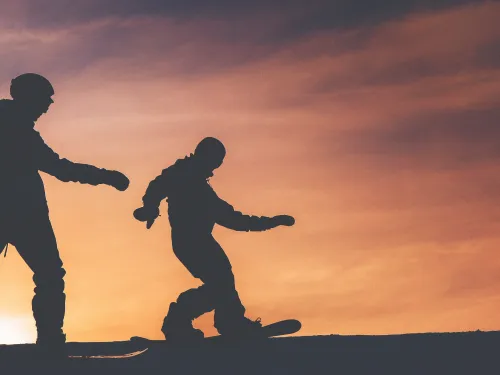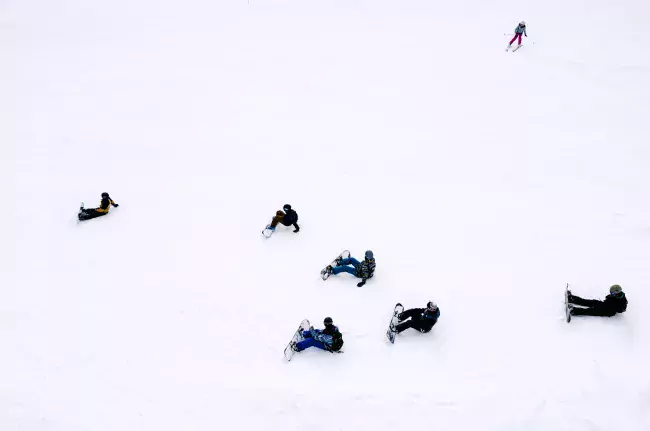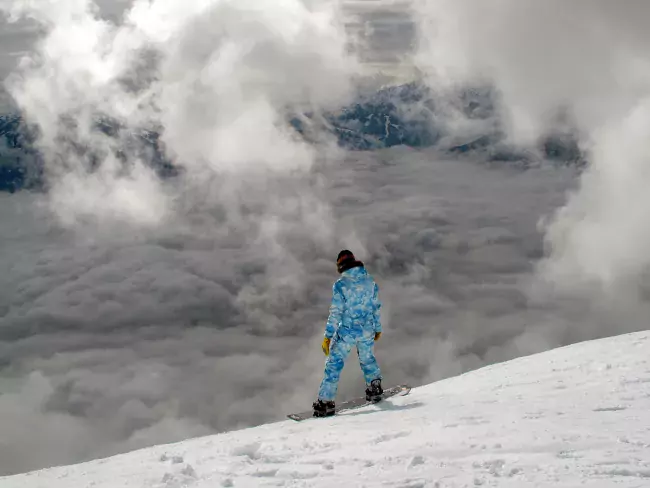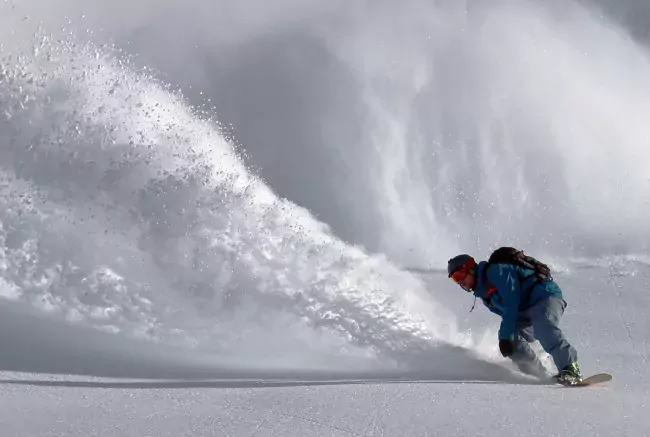Top 3 tips to make you a better skier or snowboarder
You've seen the skiers and snowboarders sail past you on the slopes. They swerve and carve and roll over the bumps like they were born with gear on their feet. While you sit there readjusting your boots wondering just how they do it. Remember these three tips from instructor, Zuzia Wodzynska.
-
BEND. YOUR. KNEES. Actually, it's not enough to just bend them. Your knees are your shock absorbers and they're no good if they can't spring. If your legs are locked (whether straight or bent) then every divot and bump will knock you off your balance.
-
If you are going over a series of small bumps, the trick is that your upper body should always be still and look like you're actually going over flat ground. It's the lower half that should be bounding up and down to absorb the bumps.
-
Also, bending from the waist doesn't count. It's true, it brings your head closer to the ground, but it does nothing to absorb bumps. If you're not sure whether you're bending from the hips or from the knees, ask a friend to take a picture of you so you can see for yourself.
-
If you feel like you're about to lose your balance, bending your knees even more can keep you from falling. It not only brings your centre of gravity down making it easier to regain your balance, it also digs your ski/snowboard edges deeper and more evenly into the snow giving you more control.
- For snowboarders, the other key point to remember is to keep your knees above your feet, not above the middle of your board. This is something I tell men often, and women always. It's a trap that us women fall into chronically because we're told all of our lives to keep our knees together. Whatever you decide to do with your knees when you're not snowboarding is your business, but when you're riding: keep 'em wide!
-
The only downside to bending your knees is that it's hard work of course, so exercise to strengthen your legs help, get more exercise tips here.
-
-
Look up. This seems like a no-brainer but it's shocking how many people look only a few feet in front of their skis or snowboard. As with driving or pretty much any fast-moving sport, you want to look far ahead and also around so you know what's coming.
-
If you're worried about being caught unawares by a sudden bump or divot, that's where those loose knees described above come in to save the day. Chances are good, if you're looking ahead, paying attention AND bending your knees then you'll know it's coming so you won't be too surprised.
-
Don't forget to keep an eye on your friends too. That goes double for powder days, and triple for glades. Tree wells are a real danger and account for many deaths every winter. Keep an eye on your group and anyone else around you so you can jump into action and dig them out quickly. More on tree well safety.
-
-
Don't forget about your upper body!
-
In snowboarding, your shoulders should remain parallel with your snowboard at all times (unless you're riding park). The less you twist the better and this is especially important toe side when you're backwards to the slope and naturally want to look down. Two reasons to turn your head and not your shoulders:
-
1) because your feet are attached to the same object, if you're not aligned, you're decreasing your vertical range of motion. It becomes a lot harder to bend your knees effectively when you're all bent out of shape. And if you can't bend your knees.... I think we've covered this already. See above.
2) Again, because your feet are planted parallel to each other with no hope of independent movement, if you turn your shoulders, your hips naturally want to follow. If your hips follow then so do your knees. If your knees twist so do your feet, and voila! You're back on your heels. While that's great for when you're just learning how to turn, it's a terrible habit to keep. It means you're probably a much weaker rider toe-side than heel-side which limits your adaptability to terrain.
- In skiing, once you've learned to keep your skis parallel, your shoulders should always be pointing towards the bottom of the slope. The independent nature of your feet means they can twist and turn and absorb bumps to their hearts delight, but your upper body should remain stable and pointing downhill. Watch Alex Bilodeau or the Dufour-Lapointe sisters to see masters at work. Granted, they're more than a little crazy, but that's what you're striving for.
So, there you go: BEND YOUR KNEES, look up and don't forget where your shoulders are.
Looking for the date on when your favourite resort opens this season? Click here
Stay connected this season on everything winter, please sign up for our SnowSeekers e-news



